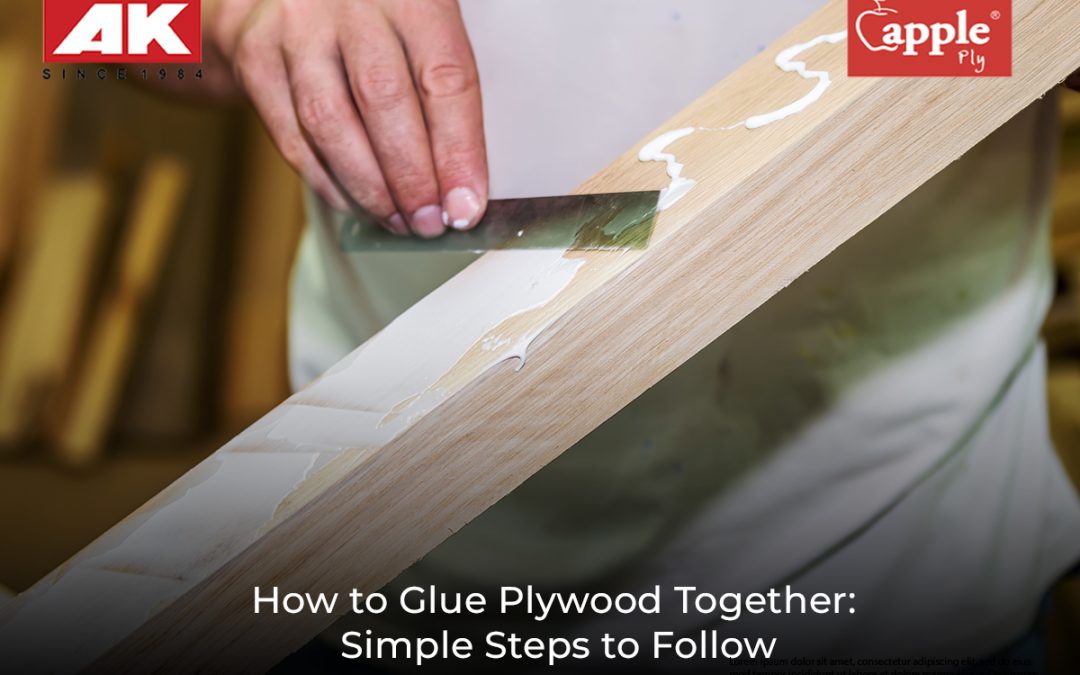You have a bunch of great quality plywood lying in front of you but still struggling to find the best way to piece it together? Or if you’re a beginner you must be wondering how to glue plywood.
Well, your struggle ends today because there’s no better way to put together your project than by gluing and nailing them together — a combination that does wonders!
Whether you’re constructing a sturdy bookshelf, a custom cabinet, or a pretty little table for two, knowing the right techniques can make all the difference. The process may seem daunting, but with the guide that we have curated for you, you can achieve professional results without breaking your head too much!
The ultimate step-by-step process on how to glue plywood together
Step 1: Dry fit the plywood
The first thing to do is arrange the plywood pieces to make sure they fit together as planned. Never forget to check if the edges and corners are aligning properly and make any adjustments in the shape or the size of the plywood, buff the surfaces to remove any sand or debris, before you dive right into gluing it all together.
Also read: A Beginners Guide When Choosing Plywood for Interiors
Step 2: Choosing the right glue
The key step after arranging all your plywood pieces, is to pick the right glue for the job. For plywood projects, it’s highly recommended to use aliphatic wood glue as it is easy to use, strong and cleans up with just water.
However, for particle board or interior-grade plywood, you can stick to using Urea-formaldehyde glue.
Pro tip: Avoid using superglue as it dries too fast and won’t keep your furniture strong in the long run.
Step 3: Apply the wood glue
Once you’re done finding the glue of your choice, you can jump right into the exciting yet messy part, i.e., applying the glue! Use a brush or roller to spread a thin and even layer of glue on one of the surfaces. Try not to apply too much glue as it may weaken the joints instead.
Step 4: Clamp the Pieces Together
Now is where your strength comes into play! Clamping is necessary to ensure your wood stays together, firmly and tightly.
Clamp the glued pieces together, and apply even pressure across the entire joint. Use enough clamps so that there’s no gap left in between. If you don’t have clamps, it’s always best to improvise with heavy objects like books, rocks or bricks.
If you’ve been procrastinating going to the gym, then you’ll definitely have a great time doing personal weightlifting challenges with this step!
Step 5: Nail the plywood
Once the glue has set, it’s time to nail your project by choosing the appropriate type and size of nails. Ensure that the chosen nails are suitable for the thickness and load requirements of the plywood.
Using either a hammer or a nail gun, drive the nails into the plywood at regular intervals—typically 6 to 8 inches apart to give it a strong and secure grip. Always make sure the nails are as flat as the surface to avoid any protruding nails that may cause future damage.
This step gives much-needed support to the glued surfaces and also adds a hint of a professional look to your furniture.
Step 6: Clean Up Excess Glue
Once the glue is dry, you might notice a few glue stains around the joints. Wipe those stains away with a damp cloth before it dries out completely.
This step is important as it gives your project a clean and finished look.
Step 7: Sanding and Finishing
Once the glue is cured and the surfaces are put together, your next step would be to sand the joints and surfaces with fine-grit sandpaper. Once done, make sure all edges and surfaces are smooth and even.
To give your project the desired finished and appealing look, consider applying a finish of your choice:
- Paint: Use a primer coat, let it dry, then apply 2-3 coats of paint
- Stain: Apply with a cloth, let it soak, then wife off excess
- Sealant: Apply a clear wood sealant to protect the surface
Choose AK Apple Ply for a combo of durability and style
From choosing the right glue to giving your project a finished look, you’ll master gluing and nailing plywood together. But will you master choosing the right plywood? With AK Apple Ply, you can!
Being one of the leading plywood brands in India, we have set a standard for high-quality plywood and perfect finishes, making us your go-to for beautiful home projects.
So what are you waiting for? visit AK Apple Ply today, find the perfect plywood for your next project and play around with your woodworking skills like a pro.
FAQs (Frequently Asked Questions):
1. How to glue plywood together?
To glue plywood together, one must apply a high-quality wood glue like epoxy adhesive to the surfaces you want to join. Spread the glue evenly with a brush or rollers and clamp the pieces together until the glue dries to achieve a strong bond.
2. Is it possible to nail plywood together?
Yes, plywood can be nailed together. Using nails or screws provides additional strength to your furniture. However, remember to use the appropriate type and size of nails or screws to avoid splitting the plywood.
3. What is the best adhesive for bonding plywood to wood?
The best adhesive for bonding plywood to wood is a strong wood glue like epoxy adhesive. This adhesive is an excellent choice that adds enhanced durability for woodworking applications.
4. What is the strongest adhesive for plywood?
Epoxy adhesives are known for their high bond strength and are often used in applications where a strong and durable bond is required. They are resistant to moisture and temperature changes, making them the perfect choice for your plywood.
5. How do you join wood pieces permanently?
A common way of joining two wood pieces permanently is by using a butt joint. Here’s how it works: Place the end of one piece against the other and apply wood glue to the joint. Clamp the pieces together to make them stay intact until the glue sets. For extra durability, use nails or screws on the joints.



